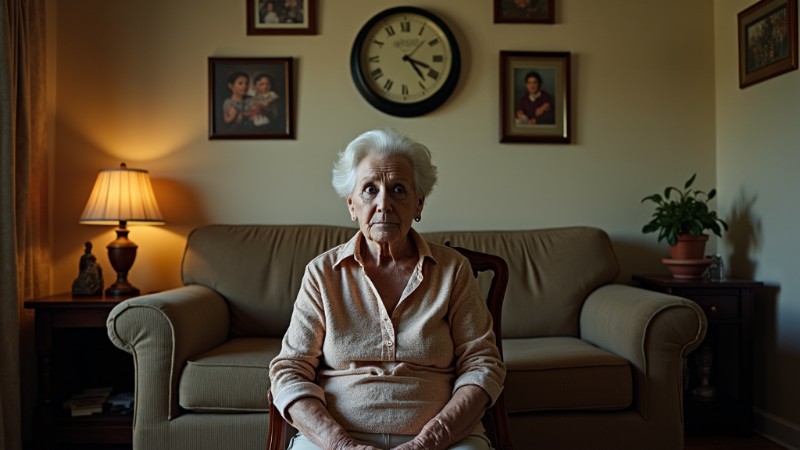Caring for aging relatives is a demanding responsibility that can leave family caregivers feeling exhausted and overwhelmed. Without regular breaks, the physical and emotional strain can lead to burnout and a decline in the quality of care provided.
Diane Ty, managing director for the Milken Institute Future of Aging, highlights the importance of balancing caregiving with self-care to support both the caregiver and the care recipient.
Respite care offers temporary relief, allowing care providers to recharge and return to their responsibilities feeling refreshed and more effective. This support can range from short-term assistance for running essential errands to extended care while a care companion is away for several days or weeks.
Such breaks play a crucial role in preserving the dignity and quality of life of both the caregiver and the person receiving care.
Key Takeaways
Respite care provides temporary relief for family caregivers, helping them recharge and maintain the quality of care for their loved ones.
- Respite care can take various forms, including adult day services, in-home care, and temporary stays in assisted living facilities.
- Financial assistance is available through Medicaid, VA benefits, and state programs to help cover the costs of respite care.
- Utilizing respite care helps prevent caregiver burnout, improves the quality of care, and enhances the overall well-being of both the caregiver and the care recipient.
Types of respite care for aging adults
Respite care can take many different forms and be provided in various locations.
For instance, adult day services offer structured programs where older adults can participate in social activities, meals, and health services during the day, providing relief for family members who can then attend to other responsibilities.
In-home respite care involves bringing professional caregivers into the home, ensuring that basic needs like medication management and personal hygiene are met while the primary support giver steps away.
Everyone deserves the dignity of aging well in the place they call home
Diane Ty
Assisted living facilities also provide temporary stays for care companions who need a longer break, typically for a weekend or a vacation. These facilities offer a change of environment and opportunities for social interaction, helping care recipients stay engaged while receiving the support they need.
Family members and friends can also offer respite by taking turns with caregiving duties, ensuring that everyone can take breaks.
Additionally, churches and senior centers often provide extra assistance and alternative options for relaxation, support, and social engagement.
Financial assistance for respite care
Respite care expenses can be a significant challenge, with the average daily cost for adult day care estimated at around $100 (USD), according to the 2024 Cost of Care Survey.
For those who qualify, Medicaid state waivers and VA benefits can help cover the cost of respite services. Some Medicare Advantage plans also include personal care services as part of their additional benefits package.
Many states provide respite vouchers and stipends to assist with expenses, while private funding from various organizations and faith-based groups can offer further financial support.
Family caregivers can find resources through programs like the National Family Caregiver Support Program and the Lifespan Respite Program.
Additional guidance and connections to local respite services are available through the ARCH National Respite Network and Resource Center or the Area Agencies on Aging.
Situations where respite care helps
A key function of short-term care is to prevent burnout among those responsible for full-time caregiving.
Supporting a family member on a daily basis is a demanding commitment. While many are devoted to looking after someone they care about, the constant responsibility can be mentally and physically exhausting.
Burnout is a common challenge for family members in caregiving roles. Many experience chronic fatigue, frustration, and anxiety, which can ultimately take a toll on their well-being.
Short-term care solutions provide an essential opportunity to step away and recharge. Whether for a few hours or an extended period, having access to reliable support allows caregivers to focus on their health and responsibilities. Knowing that a loved one is receiving proper attention in a safe environment relieves stress and helps maintain long-term stability.
Beyond general relief, respite services are especially beneficial in specific circumstances, such as when the primary caregiver:
• Balances caregiving with a job
• Must travel for personal or professional obligations
• Has planned time away for rest and recovery
• Needs medical treatment or rehabilitation
• Shows signs of severe emotional or physical strain
By utilizing structured support systems, care providers can maintain their health while ensuring consistent care for their loved ones.
Finding respite care services
For those seeking relief care services, several steps can help in finding the most suitable options.
The ARCH National Respite Network offers a National Respite Locator to assist families in identifying nearby services. Meanwhile, the National Adult Day Services Association (NADSA) directory provides a comprehensive list of adult day programs available across the country.
Area Agencies on Aging (AAA) serve as a valuable resource, connecting individuals with local respite programs. Veterans and their families can explore respite care services through VA medical centers, which offer specialized support.
Geriatric care managers provide personalized recommendations and guidance, helping families navigate available respite care choices. Online communities like CaringBridge also offer a platform for coordinating care with relatives and friends.
The benefits of respite care
Respite care not only benefits those providing care but also enhances the overall quality of support for the recipient.
Studies show that when individuals responsible for care take regular breaks, they are more present, attentive, and able to offer better assistance over the long term.
For those with cognitive conditions such as dementia, a change in environment and exposure to different care providers can be a welcome shift from routine. This variation can sometimes introduce a sense of novelty and engagement, offering beneficial stimulation.
When planning relief care, the emotional state and personal preferences of the individual receiving assistance should always be carefully considered.
Some older adults may be resistant to unfamiliar care providers or adjustments in their routine, making thoughtful planning and preparation essential to ease the transition.
It is important to communicate specific routines and preferences to the relief care team to facilitate a seamless handover and ensure continuity of support.
Short-term care also gives family members and care partners an opportunity to focus on their own health and personal needs, ensuring they remain capable, resilient, and well-equipped for ongoing responsibilities.
Support groups and specialized training programs offer additional resources, education, and emotional encouragement, helping those in caregiving roles navigate challenges with confidence.
By taking advantage of respite care services, care providers can maintain their own physical and mental health, ultimately leading to better, more effective support for their loved ones in the long run.
These programs not only provide practical assistance but also offer emotional relief, which is essential for sustaining both the individual receiving care and those offering it.
Conclusion
Respite care is an essential resource that offers family caregivers with much-needed breaks and support, allowing them to manage their responsibilities more effectively.
With careful planning and access to the right resources, care providers can find relief options that best suit their needs and those of their loved ones.
Services such as adult day programs, in-home respite care, and short-term assisted living stays ensure caregivers have the time and energy to provide high-quality care.
Financial assistance programs help offset costs, making these services more accessible. Additionally, community resources, support groups, and caregiver training programs offer both practical guidance and emotional reinforcement, helping caregivers navigate challenges with greater confidence.
Respite care is not a luxury—it is a necessity for upholding dignity and the overall quality of life of both caregivers and those they support. With the right assistance in place, caregivers can ensure their loved ones receive the highest standard of care while maintaining their health and peace of mind.















